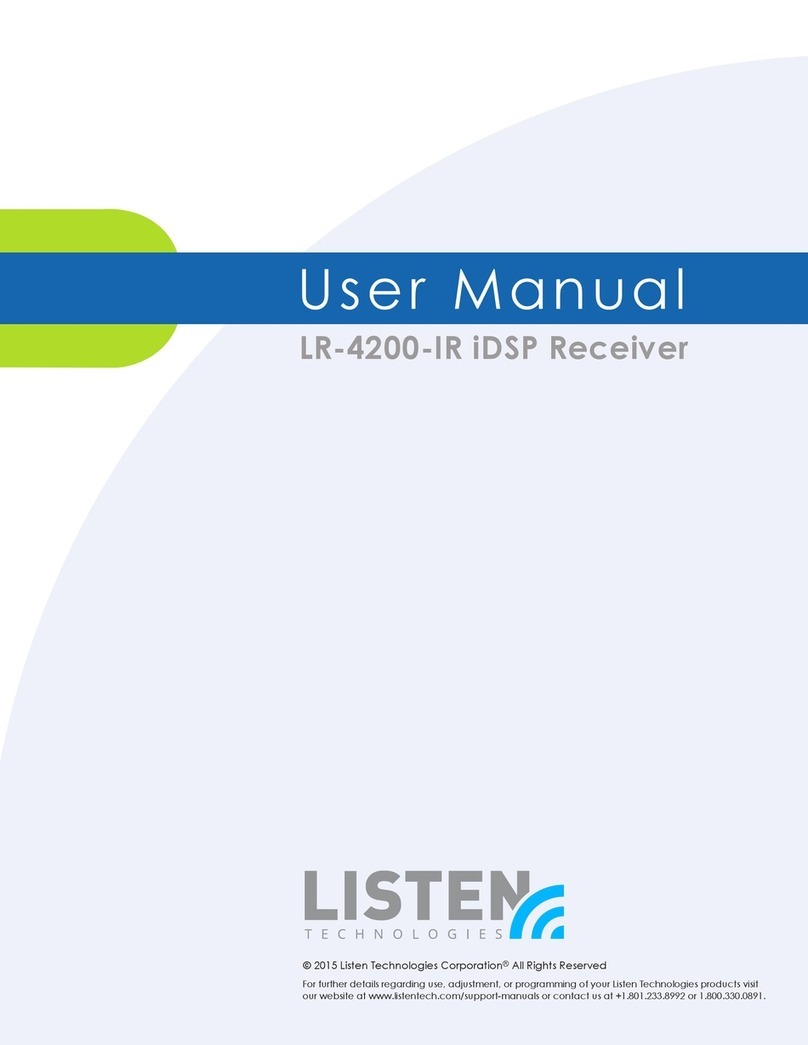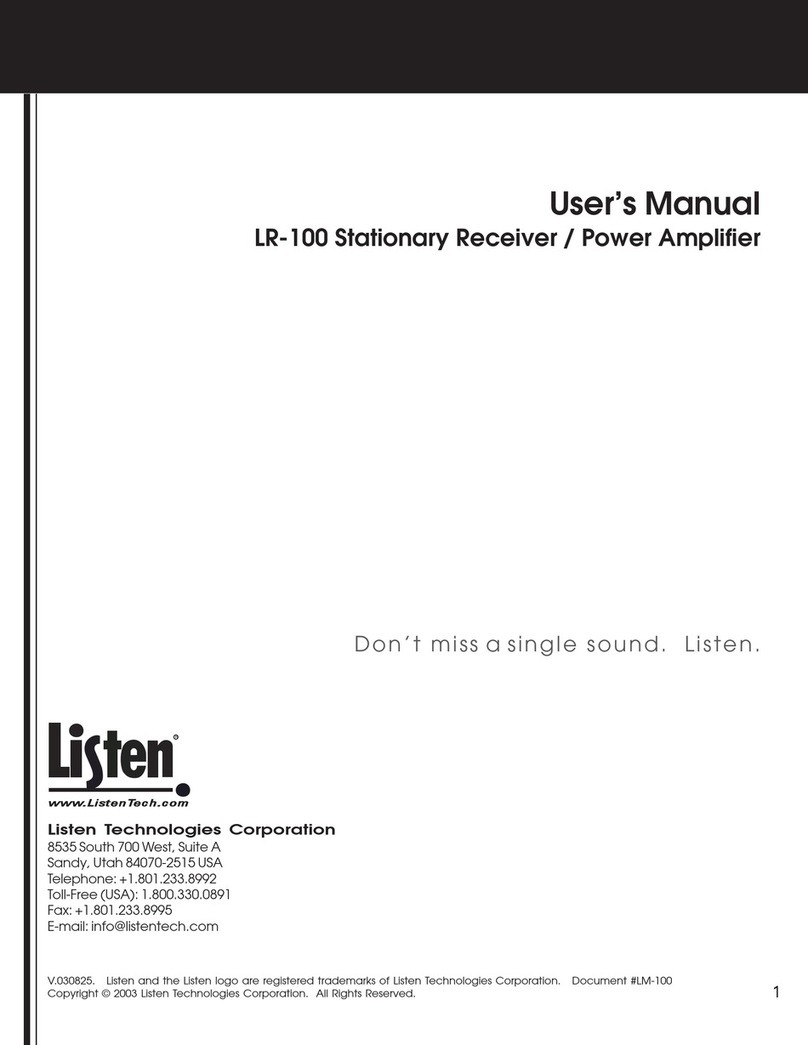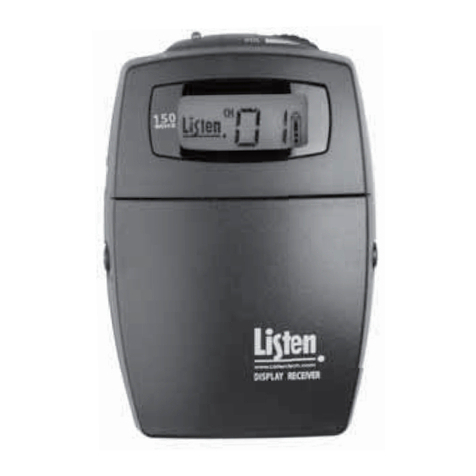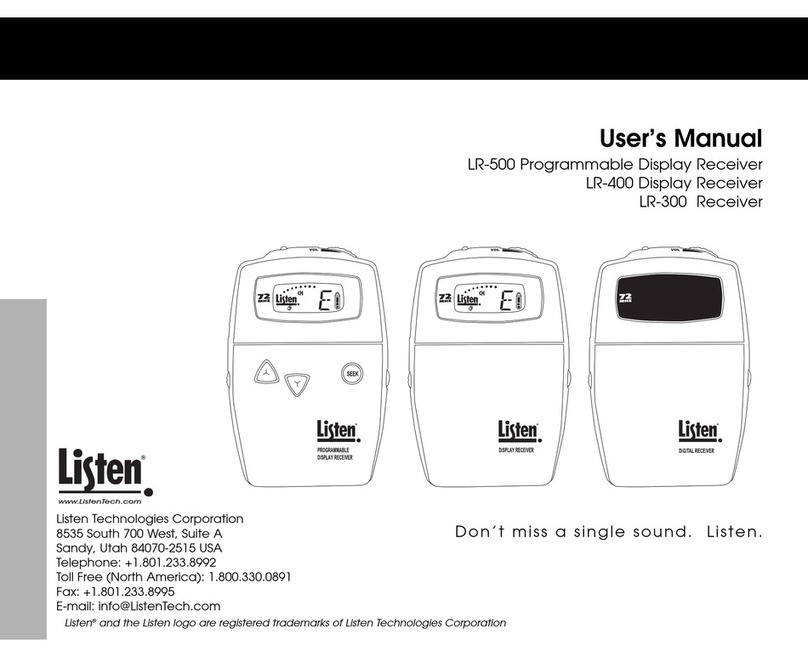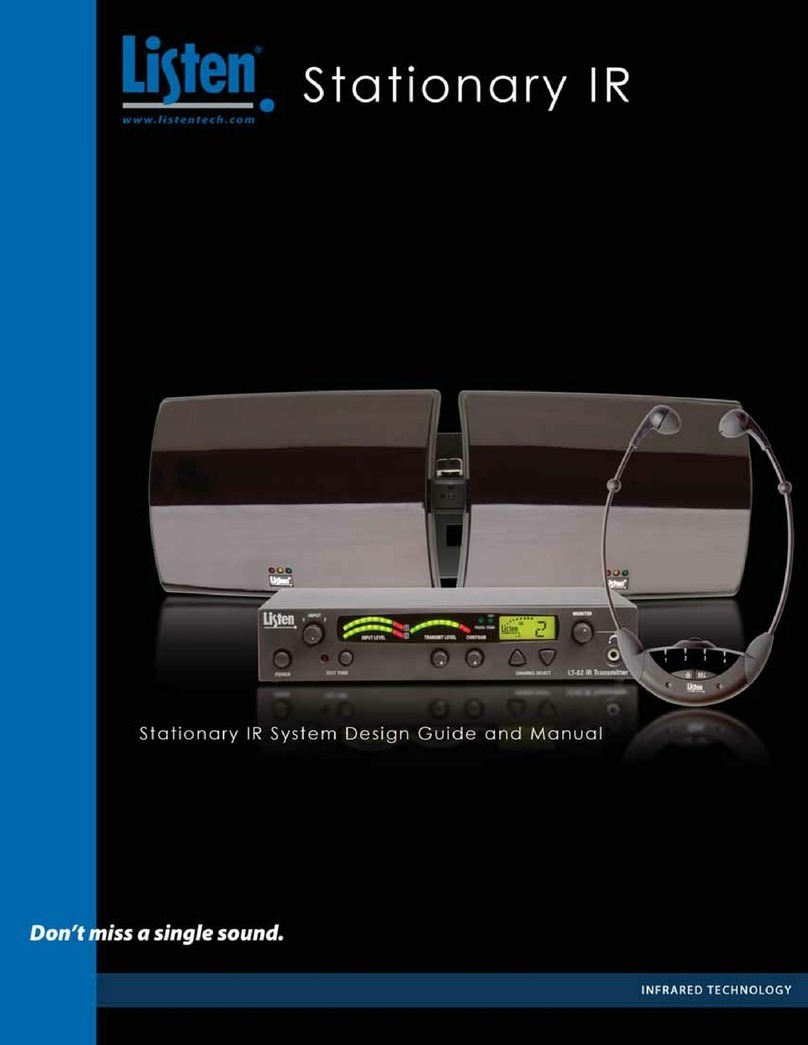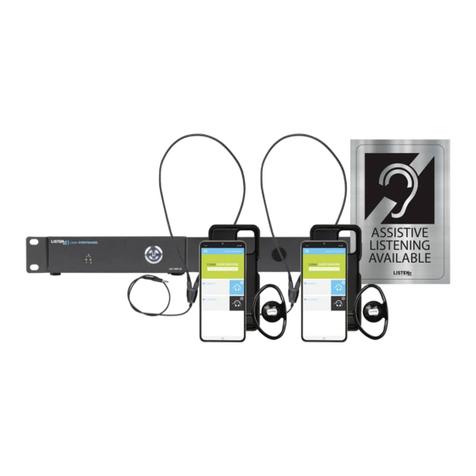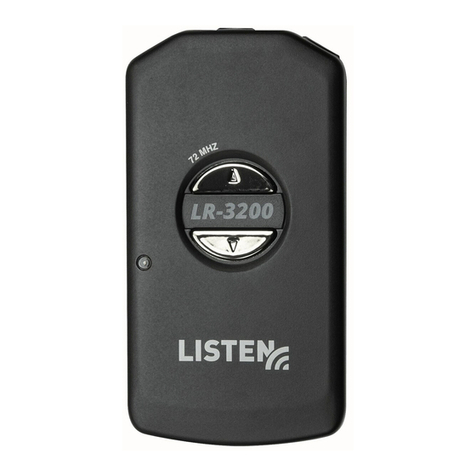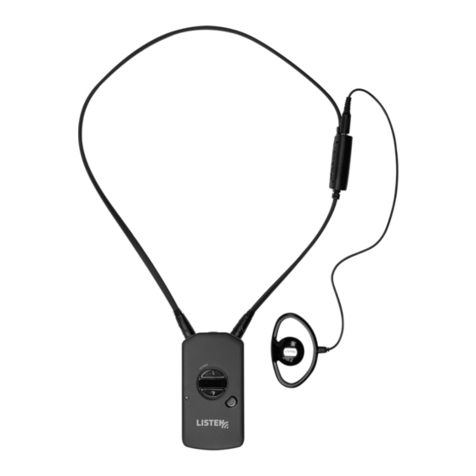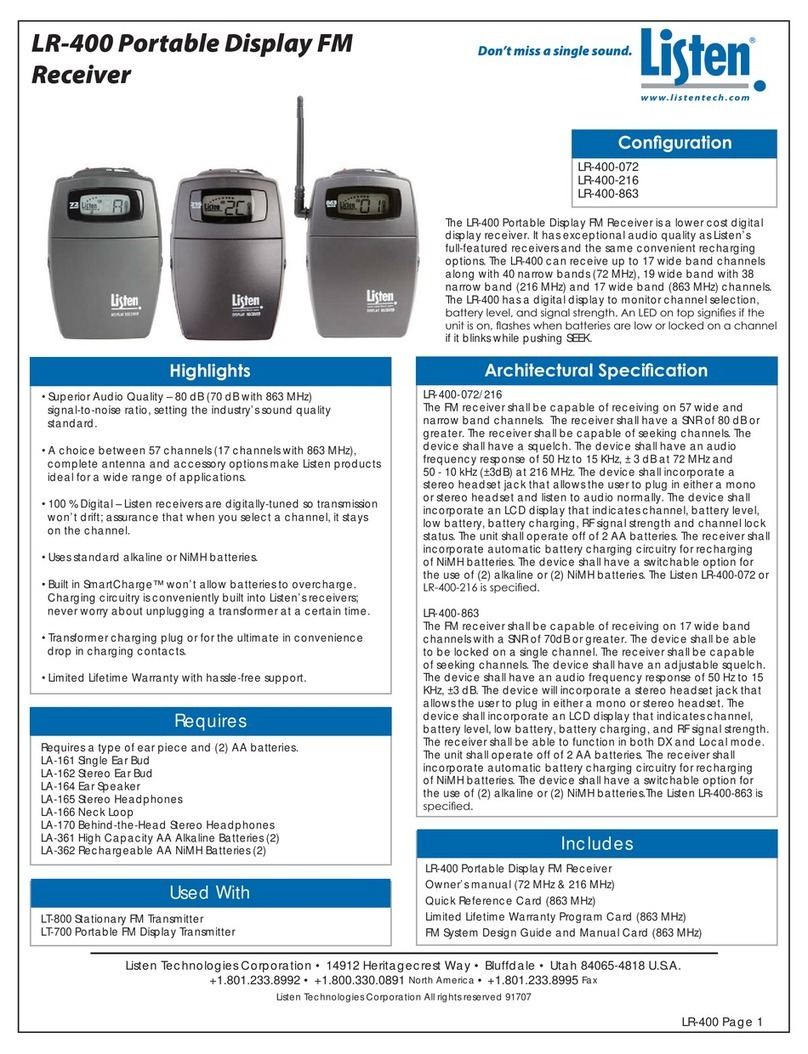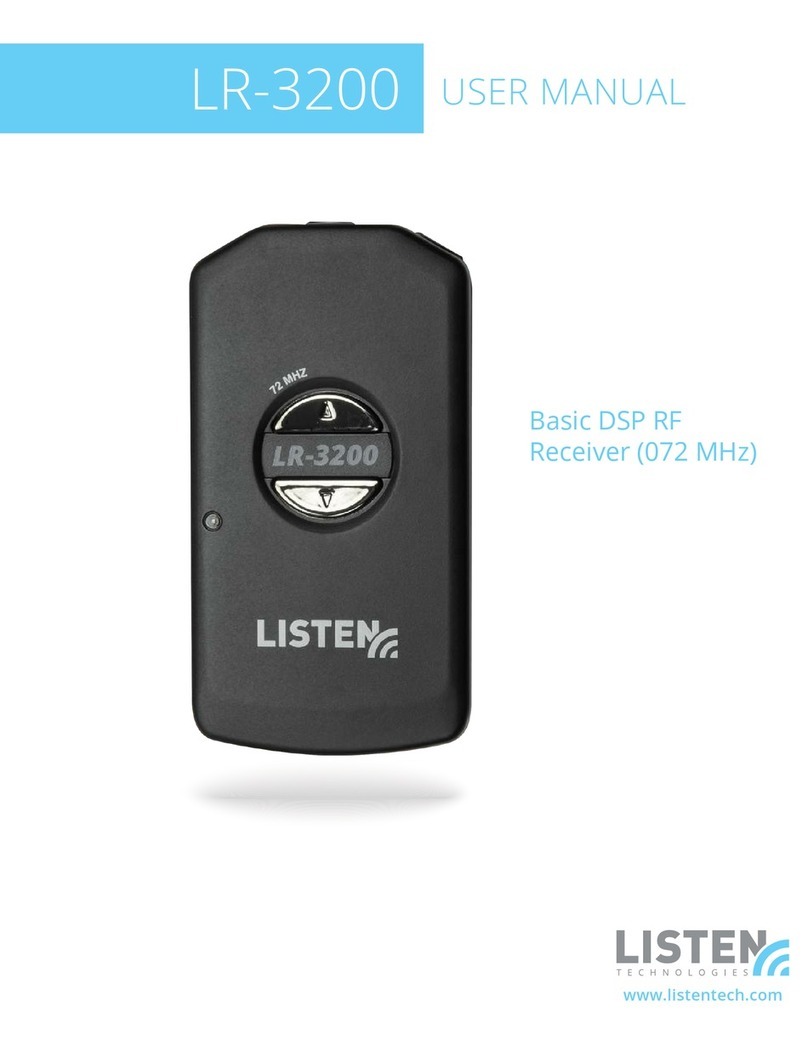Speaker/Antenna Install
8
LT-100 Speaker Connection
The LR-100 contains a 44-watt (31 watt RMS), 4
Ohm power amplifier.
The Speaker Selection switch determines what audio is
directed to the power amplifier. With the switch in
the OUTPUT position, the OUTPUT audio (same
audio that is on the OUTPUT audio connectors) is
directed to the power amplifier. With the switch in
the AUX position, only AUXILIARY input audio is
directed to the power amp. This allows you to use the
power amp separate of the RECEIVER audio if desired.
NOTE: When the speaker switch is in the OUTPUT
position and the MUTE control is enabled (indicated
by the illumination of MUTE LED), the speaker out-
put is also muted.
Connection to the speaker is achieved through pins 1
and 2 on the detachable terminal block. Strip the
speaker wires, rotate the screws on the terminal block
counter-clockwise, insert the wires and then tighten
the screw clockwise until the wire is secure in the con-
nector block. You may connect any parallel, series
combination of speakers that produces an impedance
of 4 Ohms or greater.
EXAMPLE: If you have two 8 Ohm speakers, you can
connect these in parallel to produce a 4 Ohm load to
the power amp.
The SPEAKER level control on the front panel adjusts
the level of the speaker.
The front panel headphone jack is in parallel with the
speaker level. Connect any mono or stereo headphone
to this 3.5mm jack. Adjust level with the SPEAKER
volume knob.
Installation – Antenna
A properly installed antenna is critical to the opera-
tion of the LR-100. Without a strong and consistent
RF signal from the transmitter, the LR-100 will not
meet the needs of your installation. You can use the
RF POWER indication on the LCD to provide a rela-
tive RF signal strength. You should see four or more
dots displayed on the LCD for best results.
Using the supplied helical antenna
Connect the antenna to the rear BNC connector and
orient the antenna vertically. If reception is from the
transmitter is not adequate, consider using a remote
antenna (see below) or place the LR-100 at an
improved location to improve the signal strength. See
RF Reception Maximization Strategies on page 15 for
more information.
Using a remote antenna
For better reception in longer broadcast range applica-
tions, you should use a remote antenna. A remote
antenna will allow you to get the antenna higher in
altitude and in a position that is clear of obstructions.
Please refer to the specific antennas instructions for
installation. Also refer to “Strategies for Maximizing
RF Reception” on page 15 for additional information.
CAUTION: When installing antennas, ensure the
antenna is clear of power lines.
NOTES: If the RF signal to the 216MHz model is too
high, the audio will be distorted. This may happen if
the LR-100 is within 40 feet of the LT-800-216 trans-
mitter. Consider reducing the output power of the
transmitter or optionally removing the antenna on the
LR-100 (there is sufficient internal antenna inside the
LR-100 to receive an adequate signal from the trans-
mitter).
LR-100 Antenna Installation
